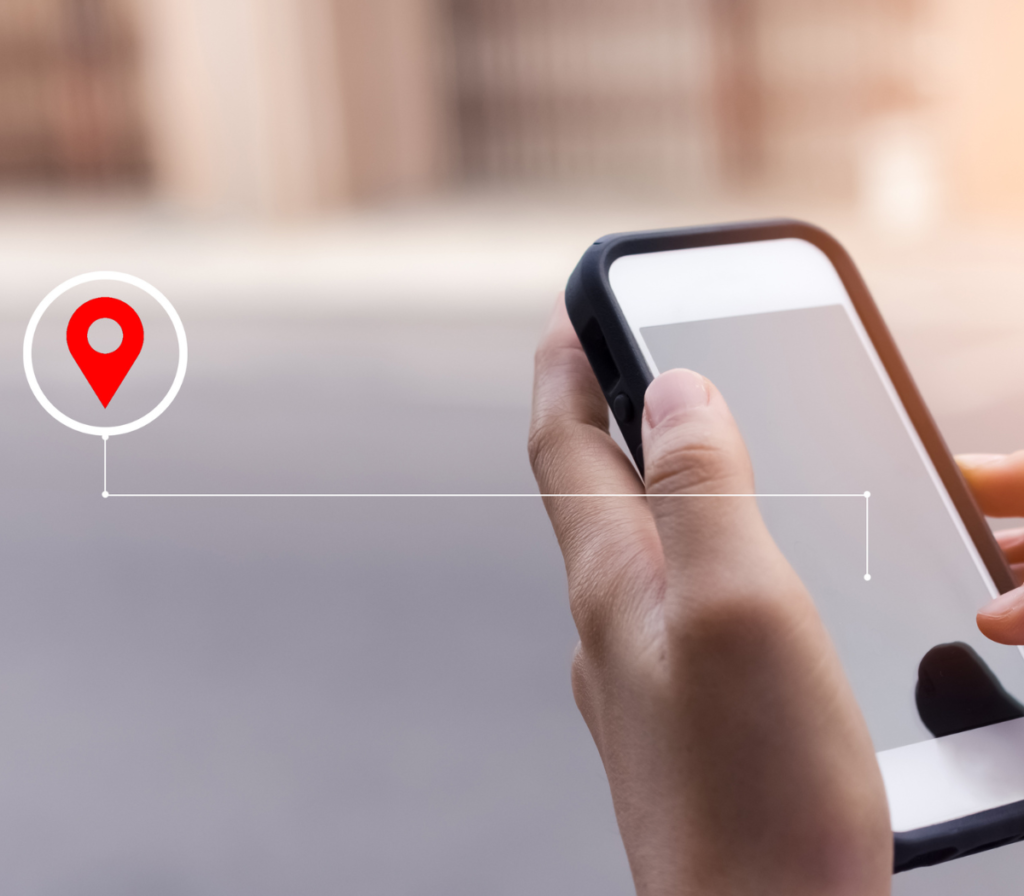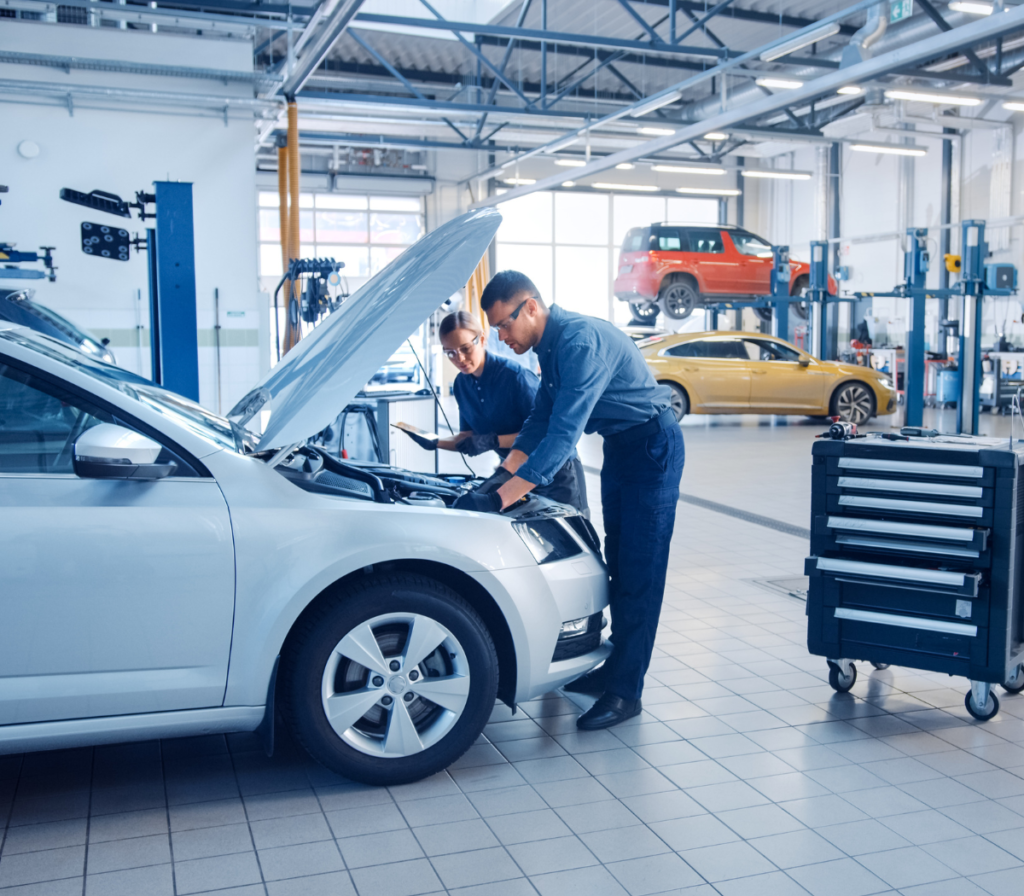Local Search 101 for the Automotive Services Industry
Demand for collision repair services is at an all-time high, but that doesn’t necessarily make closing deals any easier. Inventory and staffing shortages have created challenges that only add to a growing list of problems many consumers see with today’s collision repair experience.
In such a competitive landscape, how can local businesses win both digitally and in the real world? Our experts, Jackson Hill and Joel Eregitano, presented the following tips for local search success in the auto services industry in a recent webinar.
→To access the full webinar, click here.

Why Does Local Search Matter?
You may wonder why local search even matters for your auto services company. It comes down to the fact that most people will find your business online. After all, 97% of people start their search online. If your business isn’t showing up, you’re losing valuable business to your competitors.
Always Start With a Search
If you are just starting your local search strategy, always begin by evaluating where you stand. Do a few simple searches to see where your company appears. For example, look for:
- Auto service near me
- Best auto repair near me
- Tire rotation near me
- Oil change near me
This will help you determine your starting point and your competition.
Local SEO—Facts vs. Fiction
There’s a lot of chatter out there about SEO, and it’s important for you to be able to separate the facts from the fiction. Here are some common myths you should be aware of.
Myth: Organic and Local SEO Are the Same
Once you start getting into SEO, one of the most common myths you’ll encounter is that organic and local SEO are the same. In reality, organic SEO is much broader, providing general information. Local SEO is location-specific.
For example, if you typed in “oil change,” this could be an organic SEO, and you may find broad results on how to change your oil or the importance of an oil change. But changing it to “oil change near me” makes it local and shows results where you can get an oil change.
Myth: Reviews Are Nice But Not Essential
One of the biggest myths is that while reviews are nice, they aren’t essential. In reality, reviews are the lifeblood of your business. Most of your new customers find you because of reviews, either directly or indirectly. Maybe you’re thinking: my business mostly comes from word of mouth. Well, we’ve got news for you. Online reviews are modern-day word of mouth, and they’re here to stay.
Myth: Customers Are Finding You the Same Way as They Always Have
Another myth to avoid is that customers still mainly find you the same ways they always have. As technology advances, the way customers find and interact with businesses evolves too. Even the way people look online for auto service has changed. They look on different platforms and want instant results now. In the auto industry, people are willing to travel a little further if they need to but would rather stay close.
Myth: Print and Online Advertising Drives In-person Visits
Yet another myth is that print and online advertising drive the in-person visits to your auto shop or service center. While those do likely bring in some traffic, they probably aren’t the biggest drivers. The biggest drivers are local search results and whether your business appears on Google Maps or Apple Maps. It is the smartphone searches that make all the difference.
Myth: Google Prioritizes the Top-ranking Businesses, Regardless of Location
A final myth is that Google will always prioritize the top-ranking businesses in its results, even if they aren’t local. If this were true, it would be depressing—but it’s not.
Google prioritizes local businesses because they are so important to the economy. But it is worth noting that Google prioritizes businesses that put the Google features to full use, such as the Google Business Profile.
Local SEO Tips and Tricks
Now that you know the facts, let’s go over some important tips that will help you maximize your local SEO results.
Tip: Verify Your Google My Business Locations
The very first thing you need to do is verify your Google Business Profile for each one of your locations. Without a Google Business Profile, you are unlikely to show up in search results. And without verification, you can’t change that.
The verification process is incredibly easy. You can do it by email, phone, or mail. Email or phone will be the fastest. Make sure to confirm the information for accuracy as well.
Tip: Add High-quality Photos to Your Google My Business Page
After you verify your Google Business Profile, be sure to add photos to it. These should be high-quality images. Businesses with photos in their profiles get 35% more click-throughs. As a bonus, more photos will also boost your SEO slightly. You’ll also notice up to 40% more requests for driving directions with photos and you’ll get up to 65% more website traffic.
Other Parts of Google My Business Optimized Profiles
In addition to the photos, add a map to your page so that people can just click on it to get driving directions. And add in some metadata.
→Want more tips for an optimized profile? We shared some helpful information here.
Tip: Keep Your Google Business Profile Up-to-date
Get in the habit of regularly confirming that your Google Business Profile is up-to-date. If you make any changes, adjust the profile as necessary. This is important for everything, from address to service area to photos. But it is especially important for visiting hours. The wrong hours can lead to missed opportunities and disgruntled potential customers.
Pro tip: Don’t forget about holiday hours. You want to explicitly mention your holiday hours so that customers aren’t guessing whether they are accurate.
Tip: Use Keywords
Many people already know that keywords are a crucial part of local SEO efforts. What most people might not realize is that keywords in your reviews can help your rankings. So, asking your customers for detailed and honest reviews is great way to improve your Google Business Profile ranking.
What You Need From Reviews
We’ve already mentioned that reviews are crucial, but you don’t just want to get a few good reviews and forget about them. Google’s algorithms for reviews look at:
- Recency of reviews
- Frequency of reviews
- Star rating of reviews
- Total number of reviews month-to-month
To rank high, you need to excel in all these areas. Potential customers care about the above points as well—when deciding which business to visit, they will look at those factors. And most people will be willing to travel a little further to go somewhere with more frequent or better reviews. Consider that 83% of consumers want reviews to be relevant and recent for them to care about them.
How to Get Reviews
So, the question from most automotive businesses becomes how to get those reviews. The answer is simple—ask for them. On top of that, you want to respond to reviews, both positive and negative ones. And the best method will be to use software of some sort to automate it. Podium, for example, can automate sending text messages to request reviews. You can include a direct link to the review in the message.
Podium’s Role in Your Local SEO
Local SEO is crucial for the automotive industry. You need to take full advantage of your Google Business Profile, verify it, add photos, and keep it up-to-date. Then, work on getting reviews.
Podium is an excellent tool to help you generate reviews, manage your online reputation, improve customer communications, and more.

















